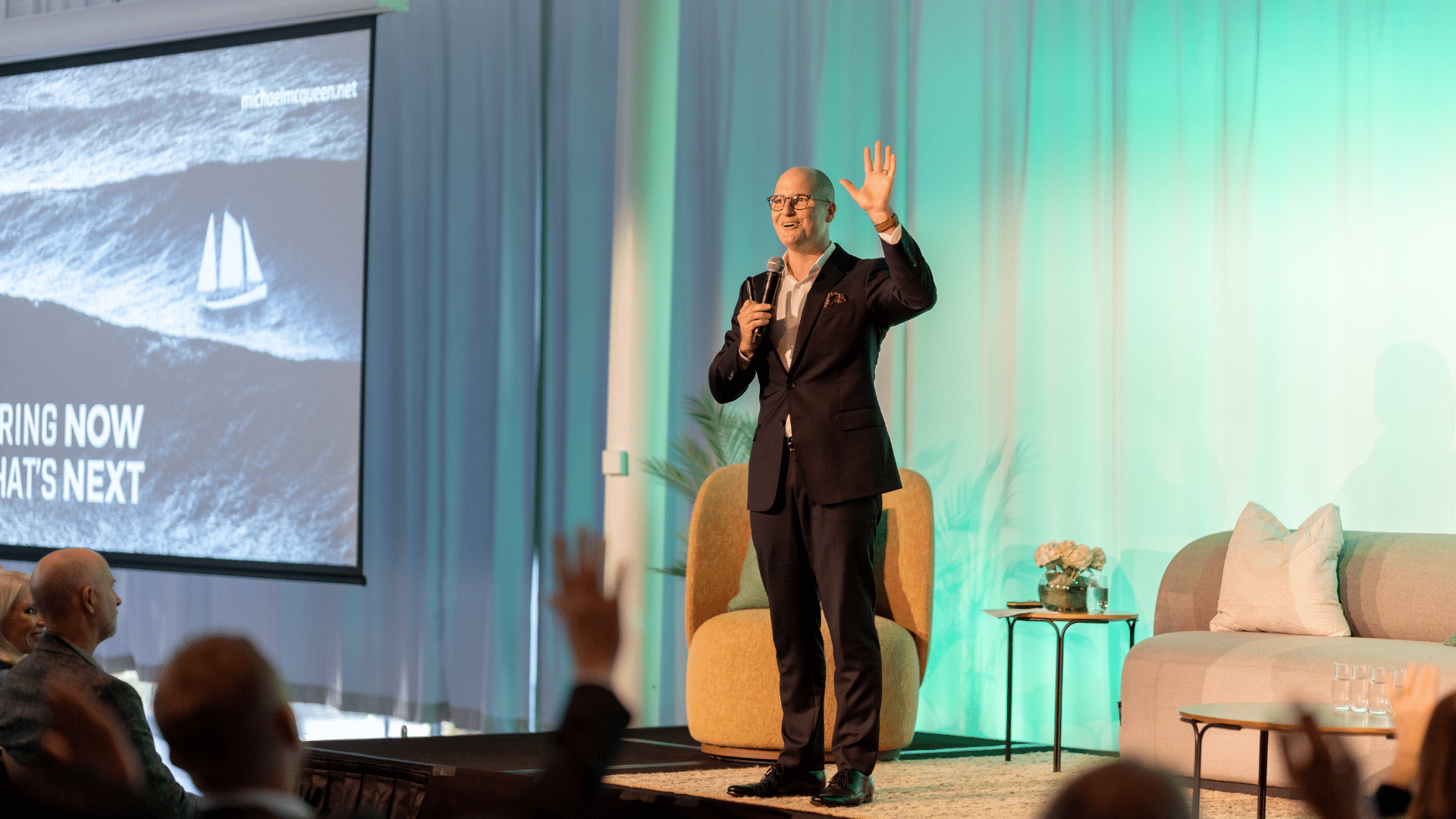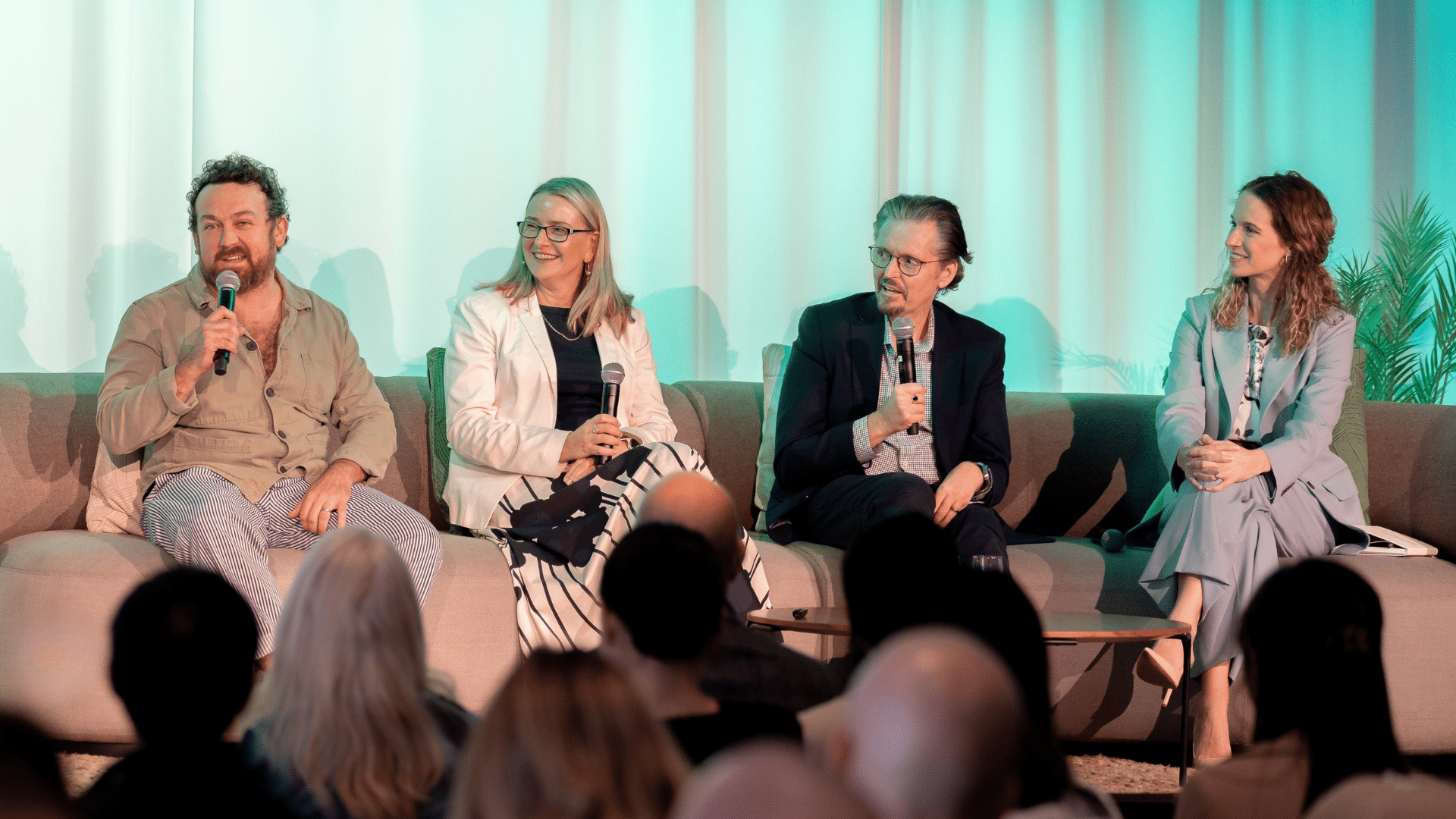
At this year’s Design Show Australia in Melbourne, Spaceful Design Director Michael Spinoglio explored how workplace design is evolving beyond traditional layouts to enhance experience, wellbeing and connection.
The deliberate workplace
Running with Scissors gives a nod to the idea that movement throughout the workplace used to be incidental, almost chaotic. It was something that happened as people moved between meetings, to the kitchen for lunch, or out the door at the end of the day. Now, with a rise in different work environments, longer working years for employees, and a greater focus on mental and physical health, we need to start thinking of movement as something that is deliberate. It needs to be built into workplace design from the outset, supporting purposeful engagement and interaction throughout the workday.
From the old rules to the new
The “old rules” of workplace design often created rigid divisions, separating front of house areas, like the reception and boardrooms, from private back of house spaces. Think of a doctor’s clinic where you’d never see the kitchen or break area. Now, in modern workplaces, that divide is softening. Arrival zones often flow into kitchen or communal hubs that serve as the social and cultural heart of the space.
While some businesses still prefer traditional layouts, many are shifting toward a more fluid design. Central hubs that could be part kitchen and part event space, anchor the workplace and connect all functions. The boundary between front and back of house still exists, but it’s more subtle, purposeful and connected.
How has the workplace evolved?
As we move away from traditional, from allocated desks toward more agile and flexible setups, such as hot desking, breakout zones and focus rooms, we’re creating new destinations within the office. These destinations invite people to move through the space with purpose, not just necessity.
We’re also seeing people work later in life, with older workers becoming the fastest-growing segment of the workforce, a trend reflected in both U.S. and Australian data. As a result, workplace design must evolve to support an ageing workforce. At the same time, shifts in how we work have contributed to rising loneliness, reduced connection, and lower motivation. Designing workplaces that encourage social connection can play a key role in improving wellbeing and productivity.
In a world where digital technology often encourages disconnection, physical workplaces can ground us and offer opportunities for genuine interaction. While improving productivity is one outcome, the real opportunity lies in designing healthier, more connected environments where people feel better, work more meaningfully, and live more fulfilling lives.
Who is leading the way in purposeful design?
Public space design is currently setting the benchmark: think libraries, galleries, public parks. These spaces are all designed for movement, discovery, and connection. When those spaces really work, it’s because the following four elements come together:
- Visible destinations: Points that draw you in and guide your movement naturally.
- Specific spaces for specific activities: There’s clear intent around how space is used.
- Joyful environments: Design that evokes something personal and adds meaning.
- Corridors that communicate: Spaces that tell a story or reinforce a sense of identity.
Translating that into workplace design
Spaceful’s workplace strategy sessions take a deep dive into how a business functions, how its people work, and what kind of environment will best support them. The following four questions are part of a broader conversation that we have with clients to help shape spaces with purpose and intent.
- What will encourage your team to move?
- What kinds of spaces do your people need to do their best work?
- What brings them joy?
- What story does your space tell?
Where to from here?
The future of workplace experience isn’t about tearing up the rulebook. It’s about rewriting it with intention and purpose. When we start thinking about how and why people move through a space, we start designing workplaces that support wellbeing, connection, and creativity at every step.


